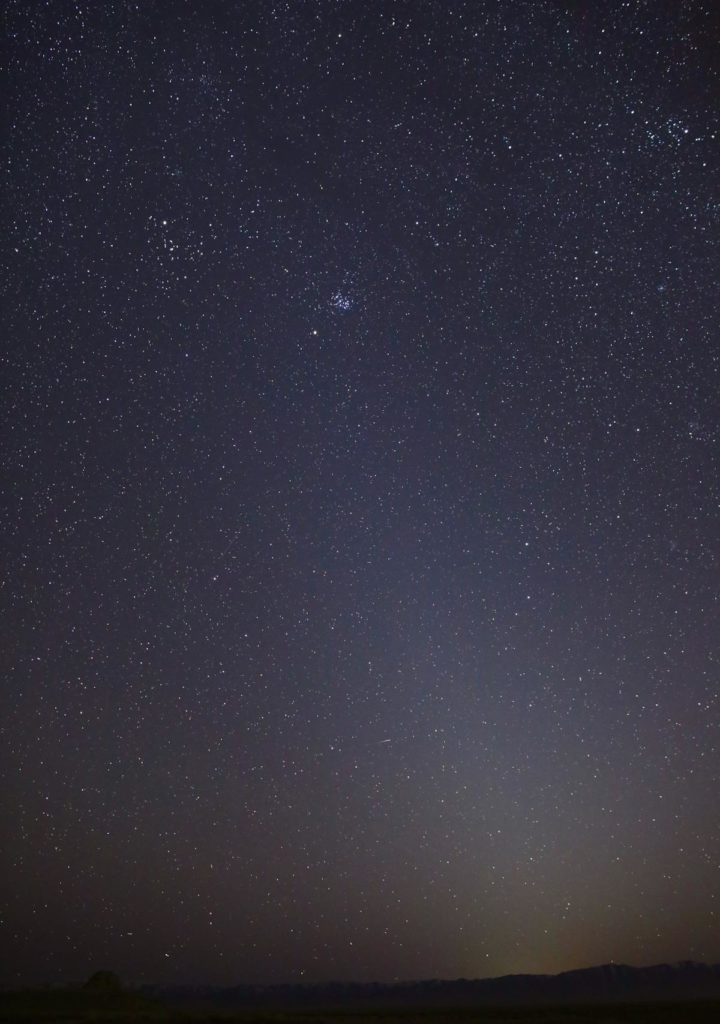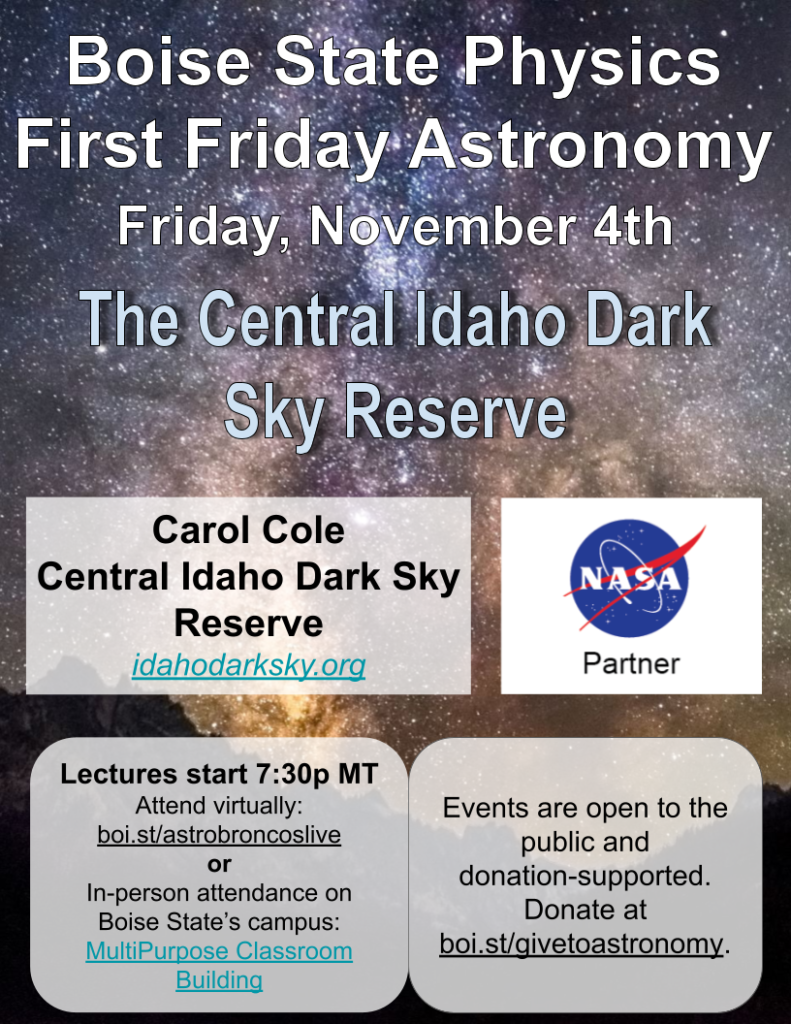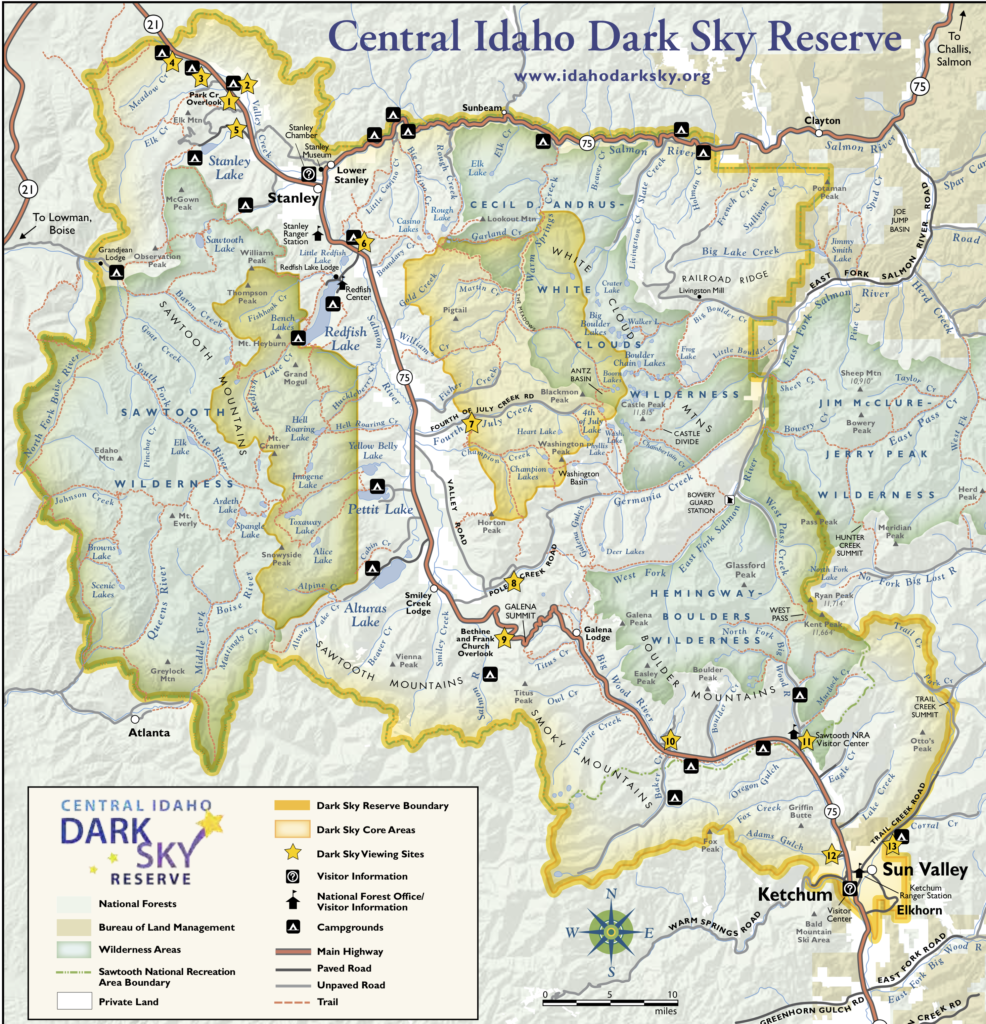
(This post previously ran in 2021 May but has been updated.)
Summer is the prime stargazing season. Venture out under the crystal Moon to watch Scorpius chase Orion from the sky. But if you stay within Boise’s city limits, you may find it harder to see some of your favorites. As Boise grows, so too does its footprint in the sky. However, there are many places in Idaho largely unmarred by the glare of municipal growth.
Stellar Magnitudes
When ancient Greek astronomer Hipparchus classified stars more than 2000 years ago, the only light pollution he had to contend with came from tallow-fueled torches. No doubt inspired by a diamond sky, Hipparchus grouped stars by brightness: the first stars to appear as the Sun set, the brightest stars, he called category 1 (e.g., Antares). The next set, category 2 (e.g., Polaris), up to the dimmest, category 6. This system, called stellar magnitudes, aligns with our visual perception of stars — each step up in magnitude is three times dimmer than the last category.

Astronomers still use this system today, and the dimmest stars you can see with your naked eye are still magnitude 6, but a telescope lets you see even dimmer stars. The Hubble Telescope can see magnitude 30, a trillion times dimmer than the star Vega (magnitude 0). Unfortunately, if you are in an area with lots of light, even a telescope can’t help. Boise’s lights limit us to about magnitude 5, so you can see Jupiter but probably not Uranus.
The Physics and Ecology of Light Pollution
The reason city lights make for bright nights is the same reason the sky is blue: photons, whether from the Sun or streetlamps, get bounced around by the gas molecules in our atmosphere. This process, called Rayleigh scattering, preferentially bounces blue light and happens in all planetary atmospheres (it’s part of the reason Uranus and Neptune look blue). This color preference is why cities that want to reduce light pollution often use yellow sodium lamps.
Light pollution affects more than stargazing. Bright lights on tall structures can disorient migrating birds and may result in millions of bird deaths each year. Night lighting also interferes with the human sleep cycle. Blue light in particular, because it resembles daylight, can reduce melatonin levels in the bloodstream and make falling asleep more difficult. That’s why many smart phones have night-time modes, which changes the screen coloration to reduce blue light.
The Central Idaho Dark Sky Reserve
Fortunately, Idaho’s low population density also means low levels of light pollution, and, over the last 20 years, many municipalities in central Idaho have passed dark sky ordinances to preserve this natural resource. For example, in 2002, Hailey started requiring shielding on outdoor lamps to keep the light on the ground instead of wasted on the sky.
These efforts culminated in the Central Idaho Dark Sky Reserve, a region from Stanley to Ketchum in which county, municipal, and federal organizations pledged to minimize light pollution. In 2017, the International Dark Sky Association awarded our Reserve gold-tier status, making it the only internationally recognized dark sky reserve in the US. The sky is so dark in some places within the Reserve that the Milky Way, invisible in Boise, actually casts visible shadows.
So the next time you plan a hiking trip to Sun Valley, be sure to pack your telescope so you can also enjoy a sky that might even have impressed Hipparchus.
On Friday, Nov 4 at 7:30p MT, join Boise State Physics for our First Friday Astronomy event when we will host Carol Cole, president of the board for the Central Idaho Dark Sky Reserve. She’ll tell us about the Reserve’s efforts to preserve Idaho’s dark sky. The talk will be presented in-person on campus (room 101 in the Multi-Purpose Classroom Building) and via live-stream – http://boi.st/astrobroncoslive.

Dr. Travis Longcore of UCLA’s Institute for Environment and Sustainability discussed light pollution in Idaho at Boise State Physics’ First Friday Astronomy on Friday, 2021 May 7. His talk is posted below – https://youtu.be/vQlfXsDB0Sk.
